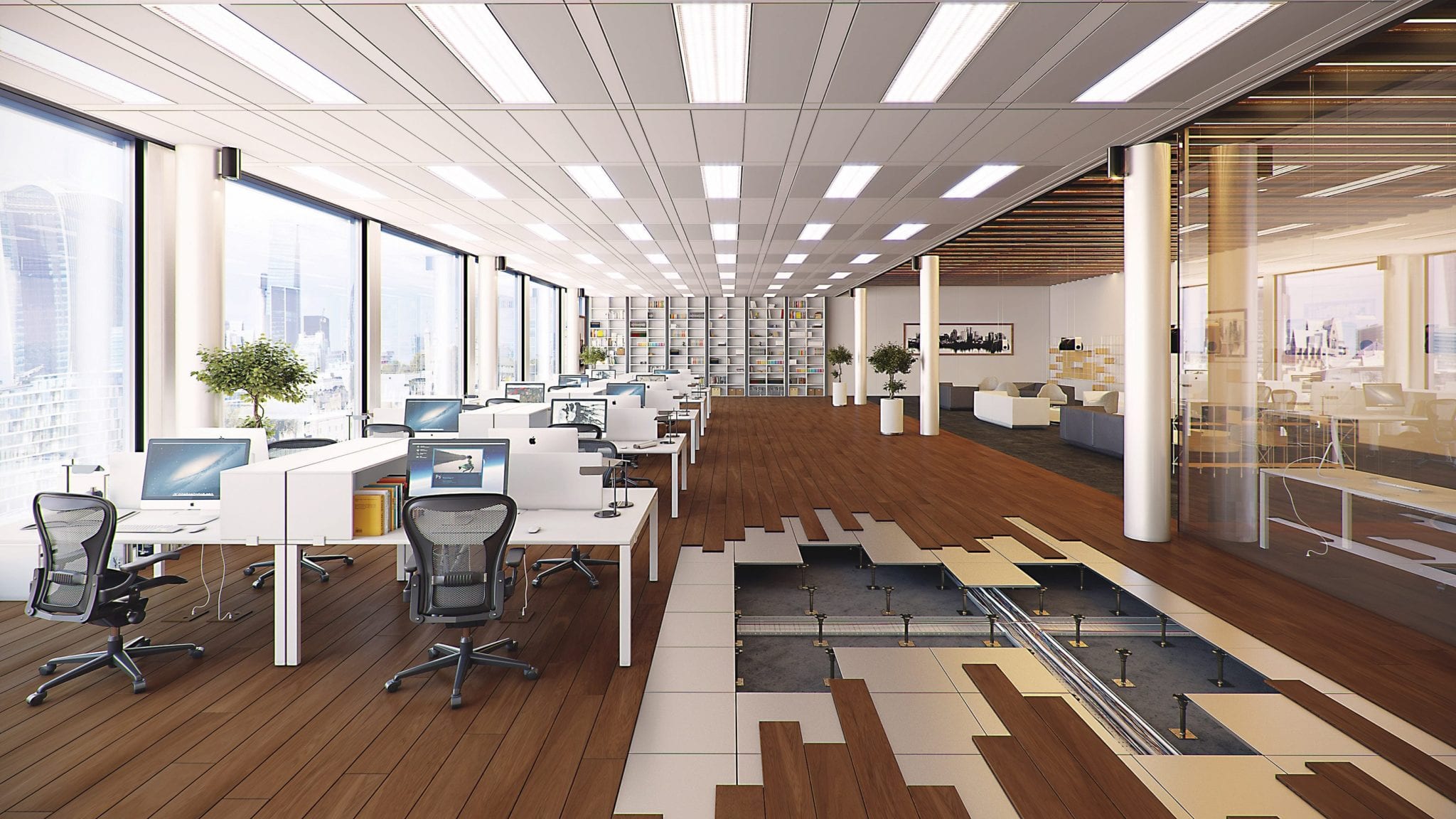In a workplace or office environment, one of the most essential elements these days is raised access flooring. As the name suggests, it is literally a raised floor designed and installed over an existing flooring in a building or space. The gap or ‘void’ woven between the two floors serves as an efficient way to manage cabling and pipework, allowing for flexible distribution of mechanical and electrical services, and HVAC systems.

Addressing the evolving necessities of modern workspaces, raised access floors offer an effective solution for businesses seeking technological integration and sustainable innovations.
What Is Raised Access Flooring Made of?
As an ideal alternative to suspended ceilings, versatile and aesthetically appealing raised access floor systems incorporate removable panels, laid in a grid formation on adjustable vertical pedestals.
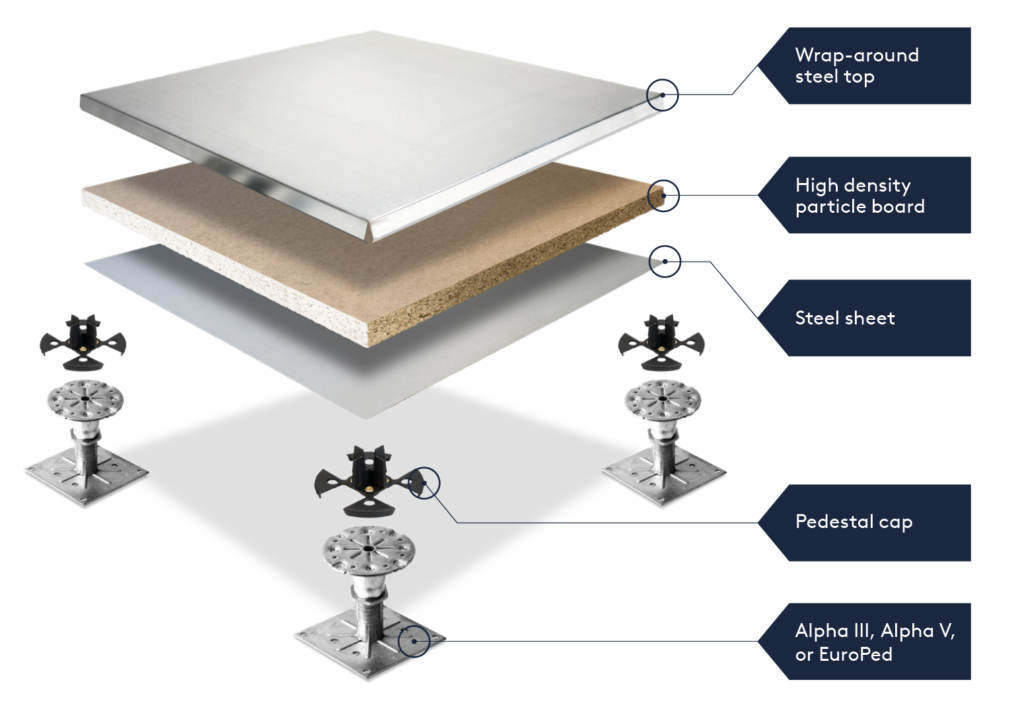
The height of the pedestals, ranging between 20mm to 1500mm, is determined depending on the required services that need to be contained within. The panels are generally made from a chipboard core encased in steel and also pre-bonded with vinyl, natural wood, granite, glass, or marble, enriching them with an aesthetic outlook.
Epoxy resin adhesive binds the pedestals to the floor, intricately adjusting to undulations in the subfloor, and horizontal steel bars called ‘stringers’ connect the entire grid system; either clipped or bolted to aid with lateral stability.
Let’s delve into the benefits of raised access floors and explore why it is essential in contemporary office environments.
Advantages of Raised Floor Systems:
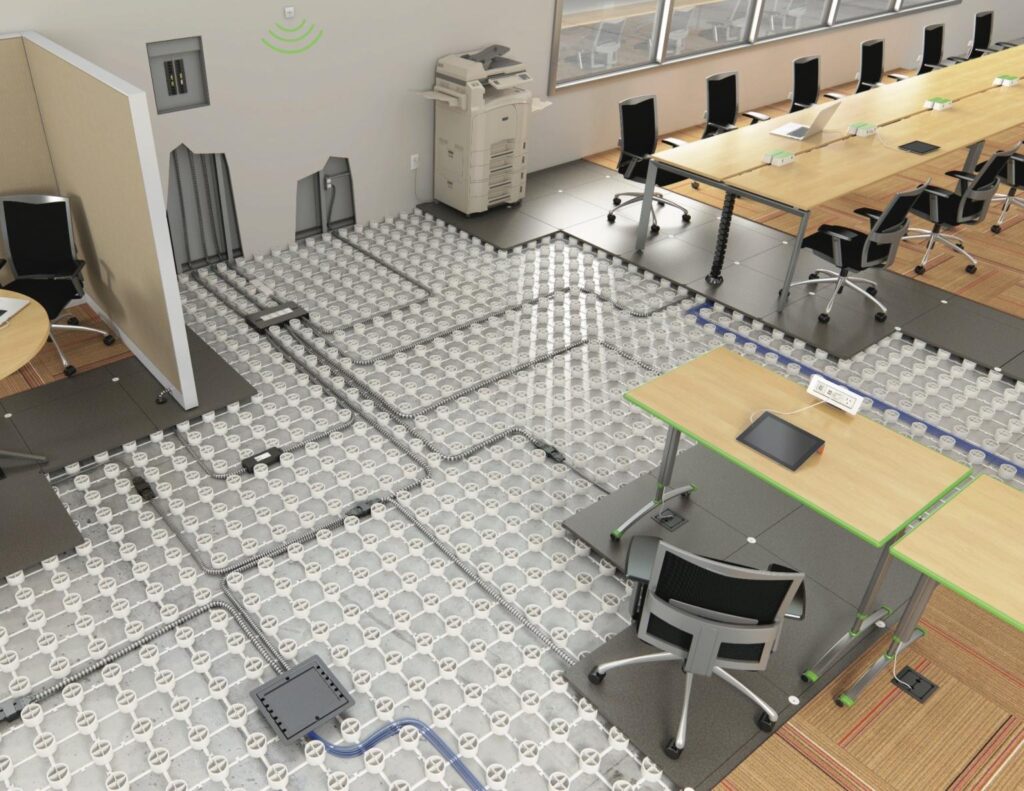
- Raised access floors can be easily reconfigured to accommodate various office layouts, making changes seamless for evolving workspaces.
- Providing a dedicated space for cables and wiring reduces clutter and potential hazards, thus maintaining an organised layout with an improved aesthetic feel.
- The free-flowing spatial character of a raised floor reduces energy consumption by directing air to specific zones, leading to cost savings and a minimised environmental footprint.
- The plenum created by raised access floors can be used to evenly and efficiently distribute conditioned air. Such an approach also allows localised climate control and improved airflow.
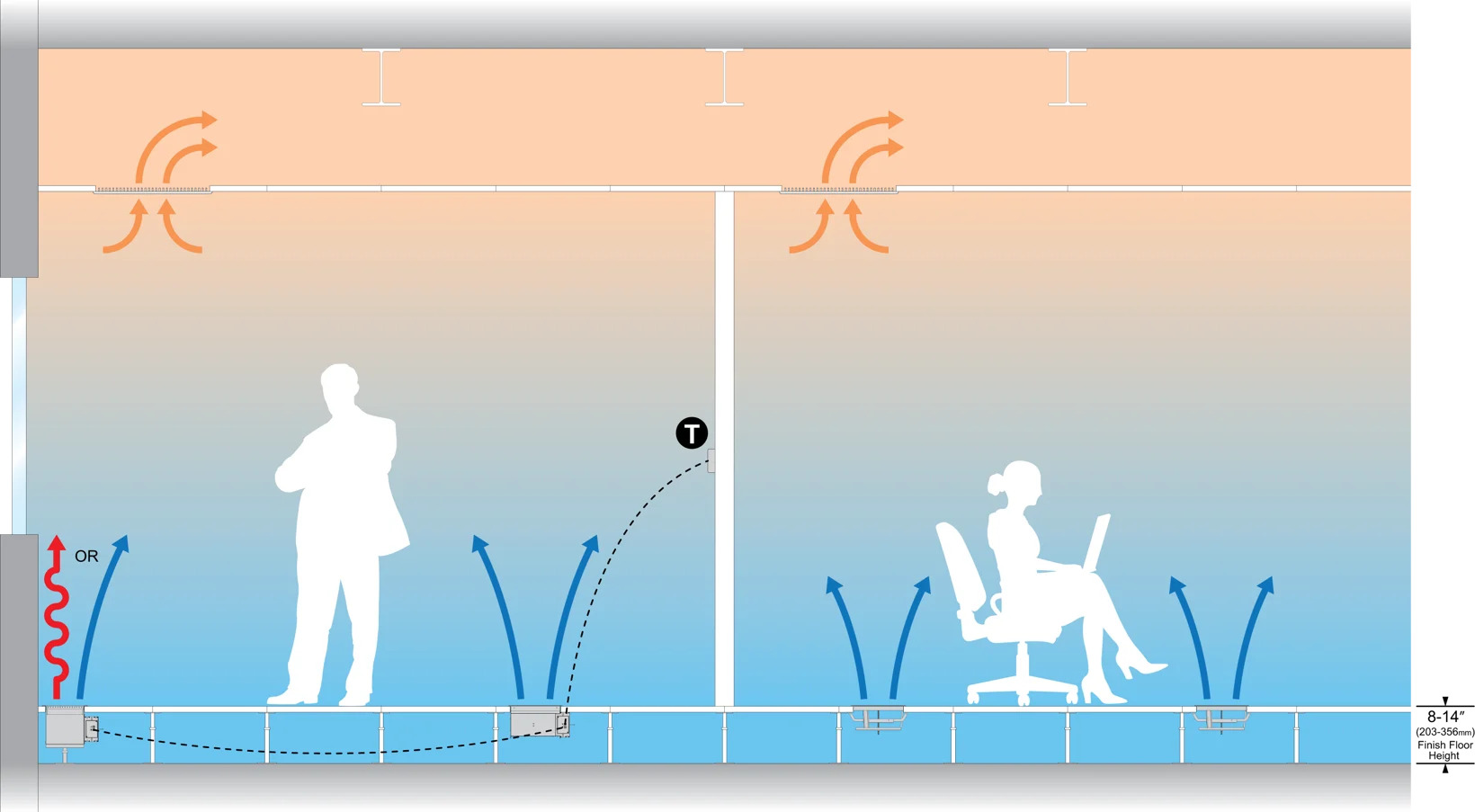
- The sleek and elegant design of raised floors contributes to a clean aesthetic and uncluttered look by concealing cables and other infrastructure elements. This gives a minimalistic charm to modern workspaces.
- With a dedicated zone for utilities beneath the raised floor, there is maximum functional space above for productive use, allowing designers to envision an open and flexible workspace layout.
- The concept of having cables installed beneath the raised floor reduces the risk of tripping accidents and improves employee circulation in the working province.
- The lightweight and easily removable panels can be effortlessly lifted to access the plenum, allowing for quick and convenient maintenance and modifications without disrupting the workspace.
- Nowadays, raised floor systems can be constructed using recyclable materials, promoting a green and sustainable approach.
- Raised floors can extend the overall lifespan of a building, reducing the need for frequent renovations and simplifying the process of upgrades and maintenance services.
The Need for Raised Access Floors in Modern-Day Offices
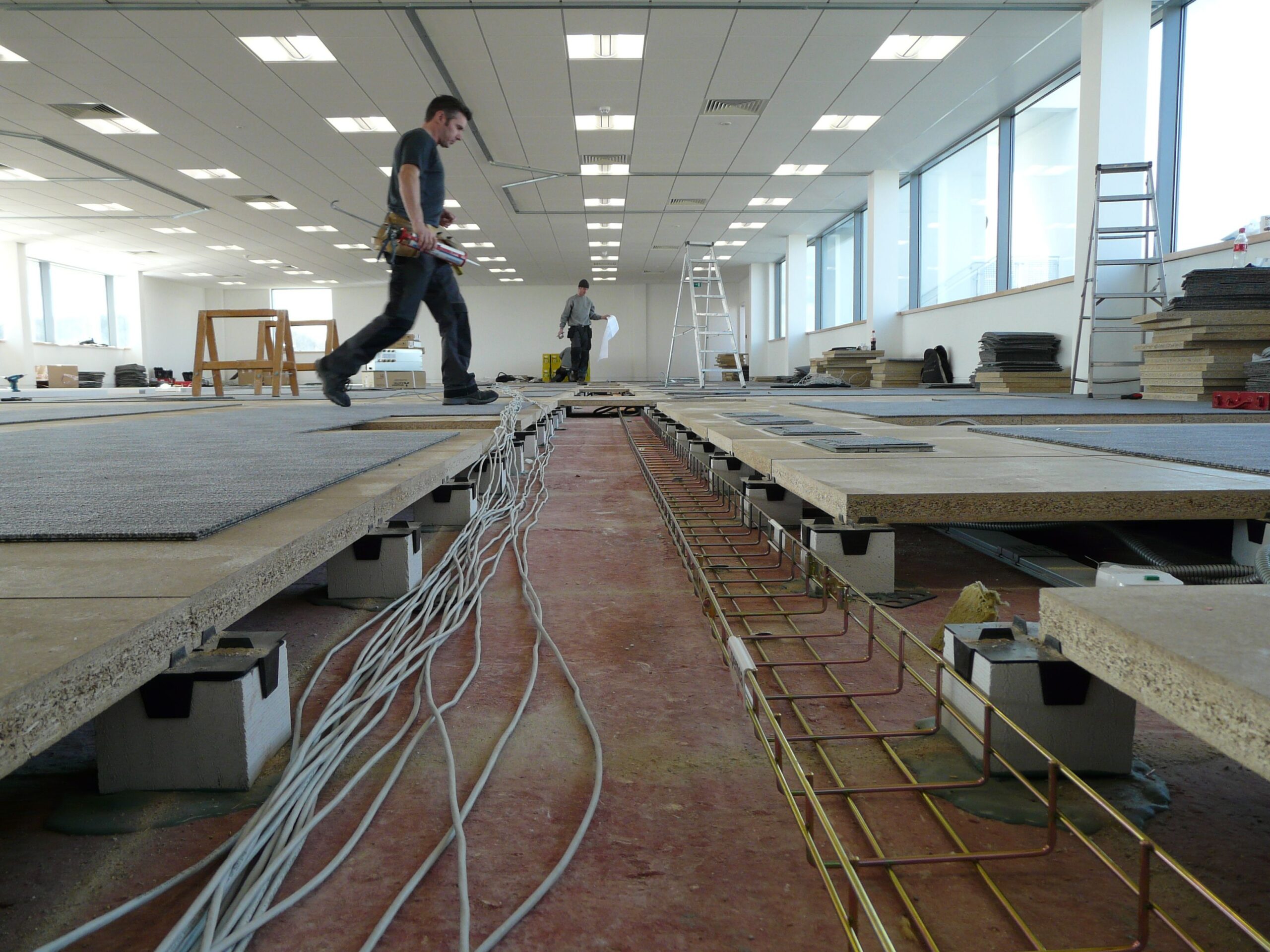
- As modern offices are becoming increasingly reliant on sophisticated IT and telecommunications infrastructure, raised access floors provide the necessary support by seamlessly integrating and optimising into the workspace framework.
- Offices now seek a dynamic work environment, characterised by fluidity, evolving team structures and project-based work arrangements. Raised floors can envision such a dynamic habitat, allowing comfortable compositions and adaptability to modifications.
- With growing awareness of the environmental impact, businesses are prioritising energy efficiency. Raised floors significantly contribute to reduced energy consumption through optimised HVAC systems. These floor systems contribute points towards green building certifications such as LEED and other sustainability targets.
- The modular aspect of raised floors demands minimal cost and disruption during infrastructure transformations and layout reorganisations. Thus, improving energy efficiency and reducing maintenance costs results in long-term savings, making raised access floors a financially sound investment.
Raised access floors inherit a myriad of advantages that align perfectly with modern office demands. From flexible and improved cable management to enhanced aesthetics and sustainability, these systems integrate a comprehensive solution that aids today’s work environments. As businesses and technology continue to evolve, the need for adaptable and coherent office infrastructure will only rise, cementing the importance of raised access flooring in modern workspaces.

